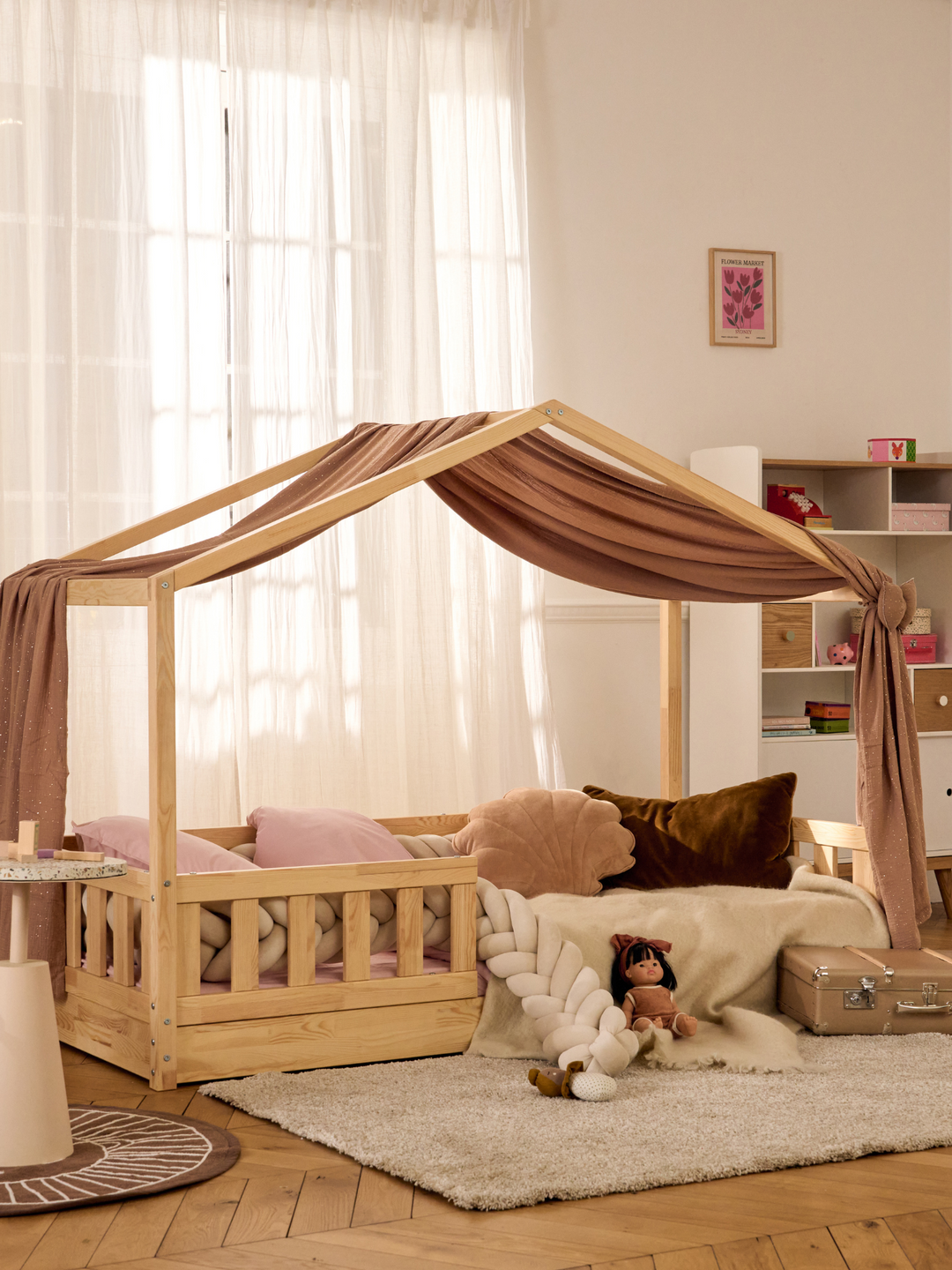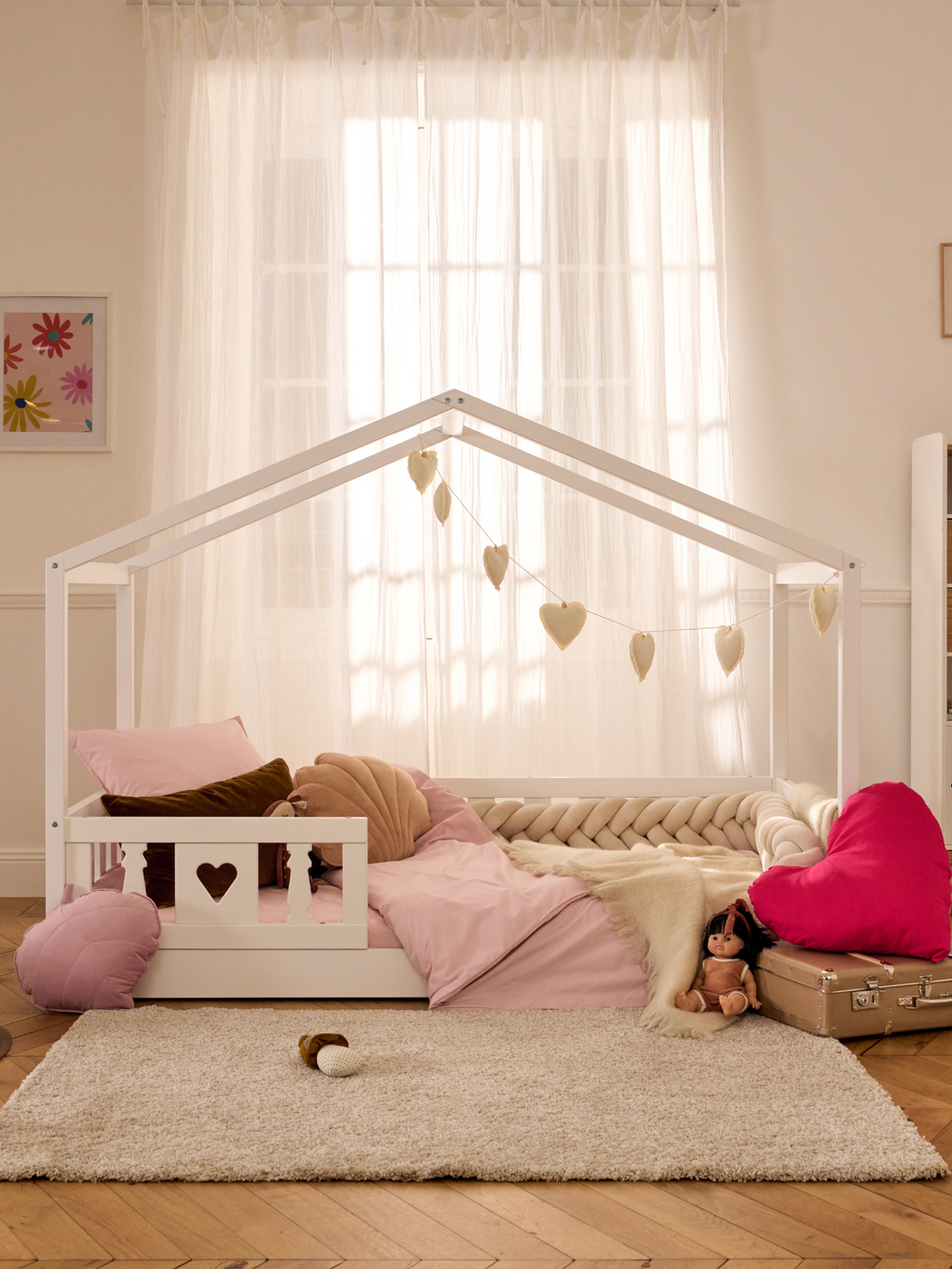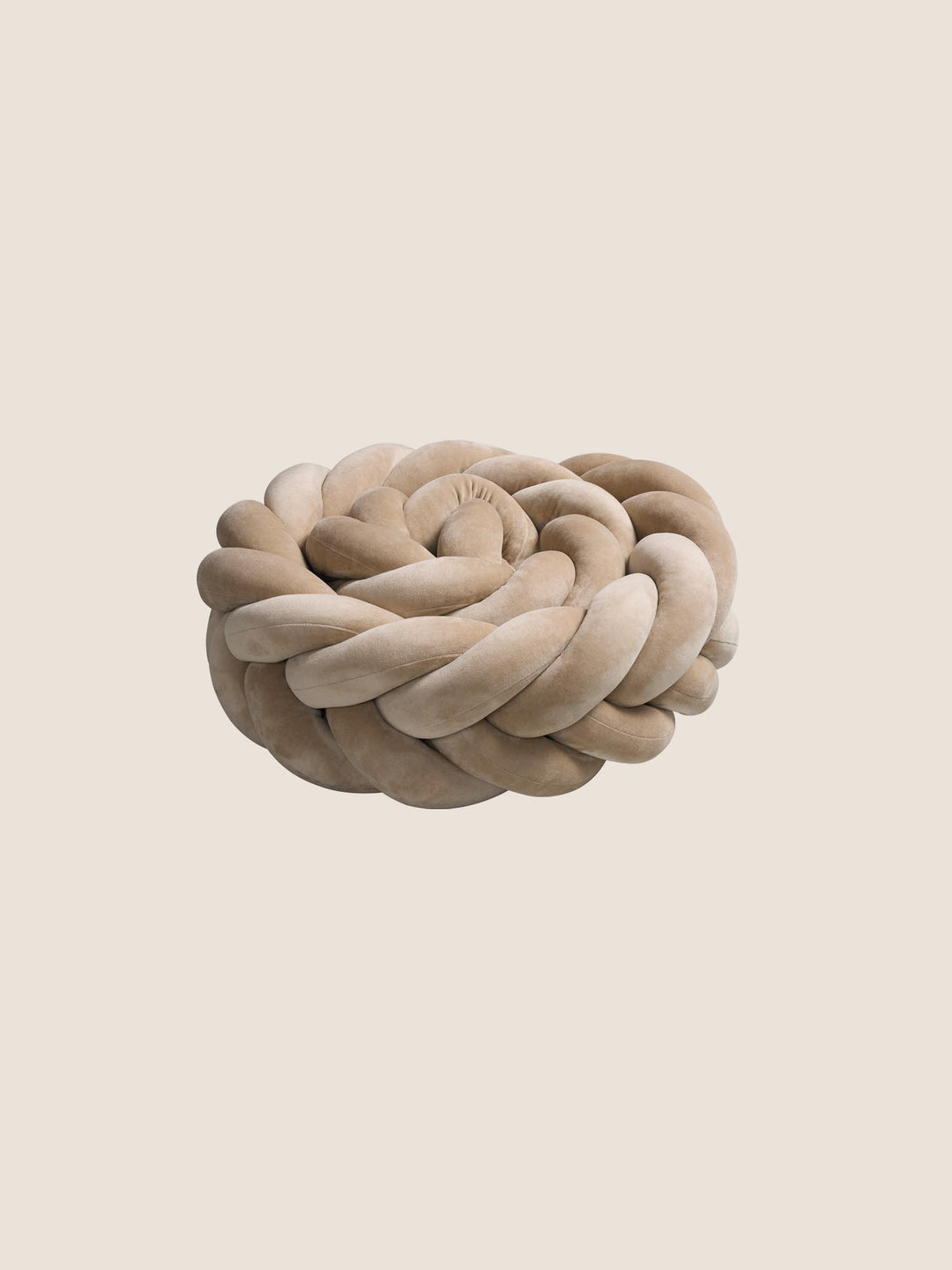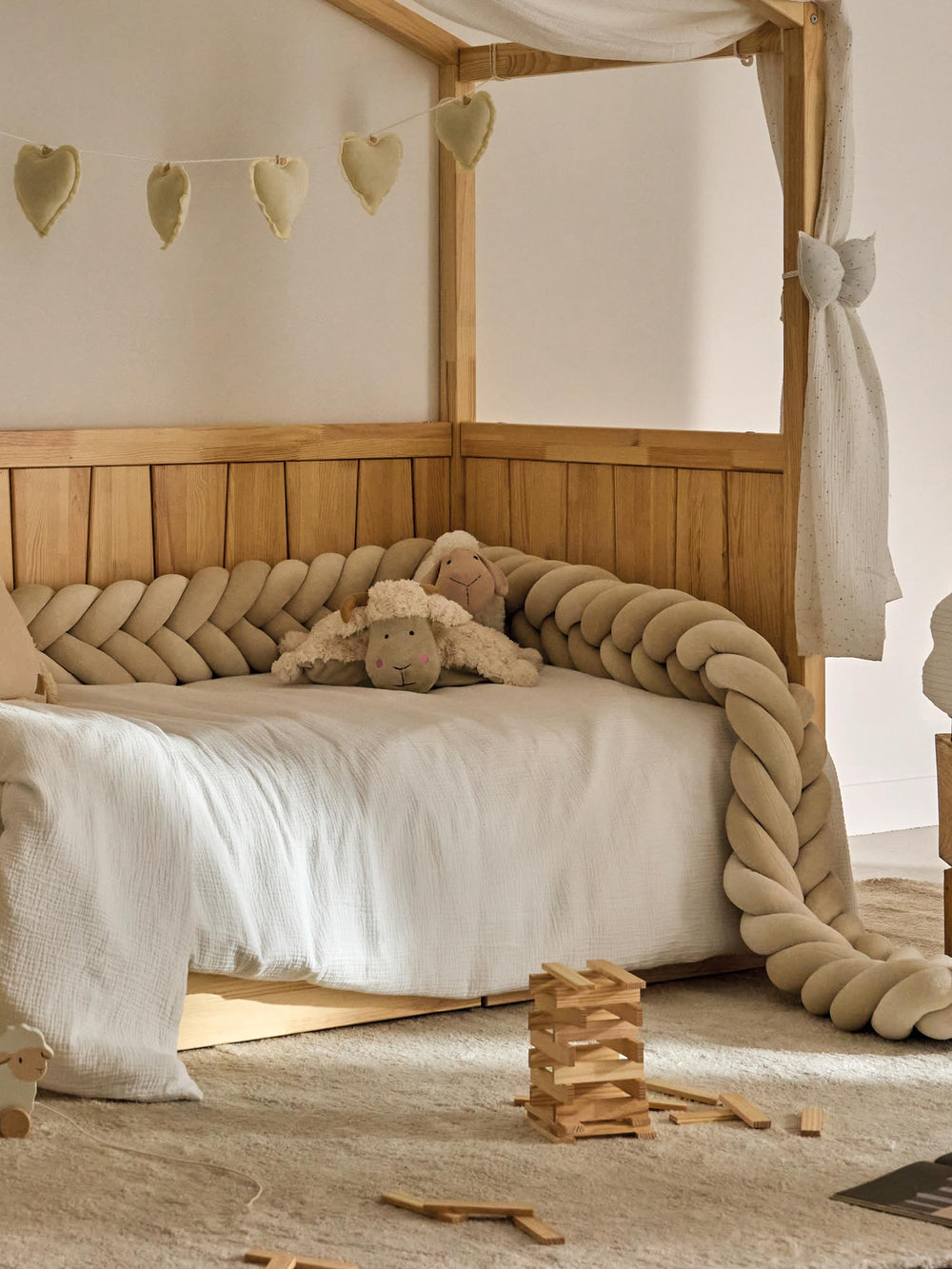La quête du lit cabane parfait pour les plus jeunes est un voyage passionnant, semé de découvertes et doté d’un enjeu majeur : choisir un cocon alliant sécurité et enchantement. Le choix du matériau, point central de cette quête, influence non seulement l’aspect esthétique, mais revêt aussi une importance capitale pour garantir la durabilité, le confort et la sécurité de ces structures ludiques. Chaque matériau raconte une histoire différente et porte en lui une promesse de nuits féériques pour les enfants. Alors, quels sont les critères pour choisir le lit cabane pour enfants idéal ? D'une robustesse irréprochable au faible impact écologique, en passant par le respect des normes de qualité et de santé, la sélection s'opère avec soin. Afin de naviguer au mieux dans cet univers, cet article se propose de devenir votre compas, vous guidant vers le choix le plus judicieux.

Selection criteria for materials suitable for cabin beds
Safety and durability
When it comes to building a cosy nest for your child, safety is not something to be taken lightly. Have you checked that the material you've chosen complies with standards EN 12221-1:2008 or EN 716-1:2008 that guarantee rugged durability ? Imagine a little adventurer climbing onto his cabin bed: the structure must be unshakeable! Wood species such as solid pine, renowned for their solidity, are often preferred. But have you considered fiberboard panels, an equally durable alternative?Comfort and maintenance
Visit comfort is king in the realm of children's dreams. For this, a natural-fiber mattresses at least 8 cm thick. It will fit perfectly around the frame of the cabin bed, while ensuring optimum ventilation. And let's not forget maintenance! A bed that's easy to clean with just a soft, dry cloth will keep this space clean and welcoming, without sacrificing precious time.Ecology and health
Ecological awareness begins at an early age. Choosing an eco-friendly untreated solid woodis to choose natural aesthetics while preserving your child's health. No toxic varnishes or paintsYou minimize exposure to harmful chemicals. Plus, have you considered the ecological advantage of a sustainable material like solid wood? It's not only used to build memories, but also contributes to respecting our planet. In the end, choosing the right material for a cabin bed comes down to balancing these three pillars: safety, comfort and environmental responsibility. What better gift can we give our children than a healthy environment where they can grow and explore with confidence?Traditional materials for making cabin beds
Solid wood: types and characteristics
Have you ever caressed the smooth, warm surface of a solid wood cabin bed ? These noble woods often make up the reassuring cocoons of our toddlers. Solid wood, with its distinctive grain and undeniable sturdiness, is a preferred choice for parents wishing to offer their child a durable piece of furniture full of character.- Beech wood: renowned for its strength and ease of processing, beech comes in a wide range of shades to suit any atmosphere.
- Oak wood: synonymous with longevity, oak brings a touch of timeless elegance to the cabin bed. Although more expensive, it's worth every penny for its superior quality.
- Teak wood: resistant to the vagaries of the weather, teak is a precious ally for long-lasting furniture. Its ease of maintenance makes it an ideal candidate for accompanying your child throughout his or her childhood.
Composite materials and plywood
But what would our exploration be without mentioning the composite materials ? These innovative assemblies often reduce costs while maintaining satisfactory quality. Plywood, in particular, offers an interesting alternative, with its criss-cross layering that gives the cabin bed a stability flawless. Far from ancestral forests, these modern materials offer appreciable uniformity and prove to be a wise choice when it comes tocombining practicality and budget control. Whether used on their own or as a complement to solid wood, they enable boundless creativity in the design of cabin beds, making each model as unique as the overflowing imagination of the children they welcome. Isn't it fascinating to realize that behind every choice of material lies not only a practical consideration, but also a story rich in values? Whether you opt for the timelessness of solid wood or the modernity of composite, you're shaping much more than just a piece of furniture: you're building fertile ground for the dreams and nocturnal adventures of the young explorers that are our children.Innovations in cabin bed materials
Recycled materials and their environmental impact
Have you ever considered the ecological dimension when choosing a cot for your child? The use of recycled materials is a commendable step in the direction of sustainable consumption. A cabin bed made from recycled wood contributes to the preservation of virgin forests. Recycling is not just a gesture for the planet; it's also a source of inspiration for designers, who see it as an opportunity to combine originality and responsibility. Here are just a few of the advantages of recycled materials:- Reclaimed wood adds a vintage, authentic touch.
- The use of recycled materials reduces the carbon footprint.
- Recycled textiles can be transformed into decorative or functional elements of the cabin bed.
High-tech materials and their use
What about innovation? Technological advances never cease to amaze, and now offer fascinating alternatives to traditional materials. Have you ever heard of bio-sourced composites or 3D-printed plastics? These newcomers to the market promise lightness, strength and a smaller ecological footprint. Here are a few examples of high-tech materials:- Reinforced natural fibers for optimum strength without weighing down the structure.
- Biosourced resins that minimize the use of petroleum derivatives.
- 3D-printed parts for complex, customizable shapes.
The importance of certification and quality standards
Choosing a cabin bed for your child goes far beyond aesthetics or price. Have you considered the certification and quality standards ? These elements are crucial, as they attest to compliance with the highest standards of safety and ecology. A cabin bed is the private domain where your child will dream, play and grow, so every detail counts.Ecological and safety certifications
Have you ever wondered what those little logos on the labels mean? They're a guarantee that the product complies with certain environmental and health requirements. Visit CE markingcertification, for example, is more than just a formality; it represents compliance with current European regulations. For a cabin bed, this means that the structure has been assessed for its stability and absence of harmful substances. Here are a few other certifications to look out for:- FSC or PEFC, which guarantee that the wood used comes from sustainably managed forests.
- Oeko-Tex, which certifies that the textiles used are free from hazardous chemicals.
- Greenguard Gold, guaranteeing low volatile organic compound (VOC) emissions for improved indoor air quality.
Compare and identify quality labels
Among the myriad of existing certifications, how do you distinguish the ones that really carry weight? It's essential to learn how to decipher these labels to ensure that they correspond to the strict standards you're looking for. For example, a label such as Certipur-US for foam used in some mattresses indicates the absence of substances such as phthalates or formaldehyde. When comparing the different cabin beds available :- Check that the manufacturer provides transparent information on its certifications.
- Find out about the reputation of the certification bodies mentioned - not all are created equal.
- Don't hesitate to contact the seller or manufacturer directly if you need clarification on certain technical specifications or unfamiliar labels.




